A condominium and hotel project under construction at the base area of Keystone Resort in Summit County, Colo., is the first major project at the resort in 20 years. It’s also the largest job PCL Construction Services has built in Summit County, says Matt Meunier, construction manager for the general contractor managing the project.
With PCL, that superlative means something. “We have a very strong reputation for mountain work,” says Ryan Schmidt, district manager for PCL’s Denver district, pointing to such projects as Grand Colorado on Peak 8 at Breckenridge and Viceroy Snowmass, two large properties built within the last 15 years.
Kindred Resort will feature a pair of towers with for-sale residences on either side of a ski-in, ski-out hotel— the first of its kind at Keystone—located “at the front door” of the resort’s River Run Gondola, says Rebecca Stone, principal at Denver’s OZ Architecture. “At most resorts, that front door has already been developed. It was just such an unusual opportunity to have this empty lot right there at the base,” she says, adding that the project will help “create a new identity for Keystone that keeps with what’s already out there.”
Targeted for completion in summer 2025, Kindred’s three interconnected buildings will total 370,000 sq ft, with 95 condominium units in the east and west towers on either side of a hotel with 107 rooms. Structural work on the west tower and hotel started in spring 2023, with the east tower to follow in the fall. The budget is more than $300 million.
Kindred is a joint venture of Scott Russell, Shervin “Shevy” Rashidi and Ryan Geller with Mexico City-based Interland. Vail Resorts will operate the hotel via its RockResorts subsidiary and use the building for some of Keystone’s operations.
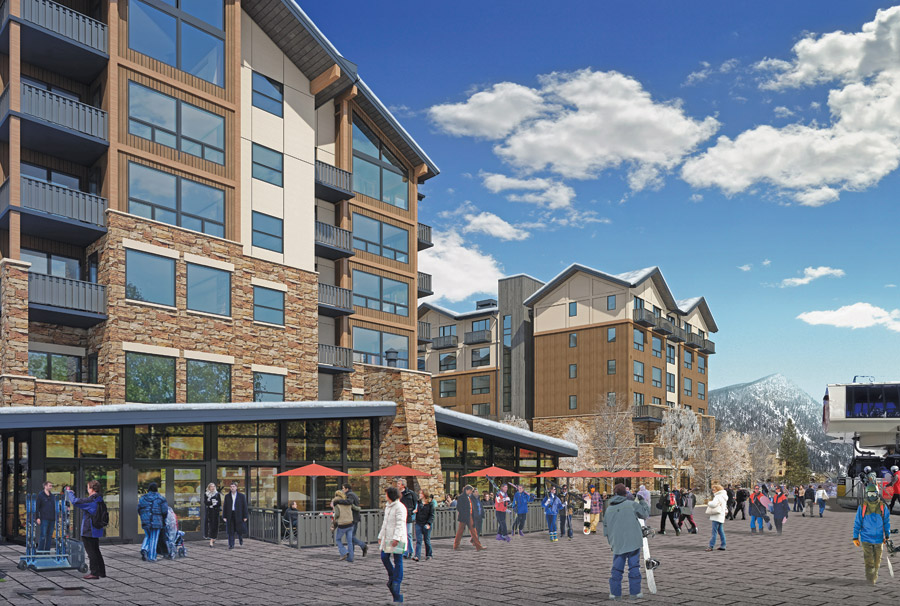
Kindred will host three new restaurants and an events plaza, adding vibrancy to the ski resort’s base area.
Rendering courtesy Oz Architecture
The Long Road
Rashidi has lived and worked as a restaurateur and developer in Keystone since the early 1990s. “I’ve put in my time in the area and seen Keystone grow up,” he says. Rashidi was involved in the opening of the Kickapoo Tavern in 1995 and now manages eight other restaurants in Summit County as part of Rocky Mountain Hospitality.
Leading the design team, Stone tells a similar tale: She worked at Keystone as a hostess at an on-mountain fondue restaurant while she was on holiday break from Iowa State University in the early 1990s. Employee housing was full, so Stone lived in the coatroom in the Outpost Lodge.
In 25 years with OZ, she has worked on a wide range of resort projects in Snowmass, Breckenridge and Copper Mountain, Colo.; Mammoth Mountain, Calif.; and Whitefish, Mont., many of them with PCL.
“If it’s in the Colorado mountains, our team has probably touched it,” she says. “It’s an unusual specialty because there are not many architects that really focus on resort communities. That’s been my focus since I got to OZ in 1998.”
Kindred, then dubbed One River Run, was one of her first projects. In the 2000s and 2010s, she worked on subsequent concepts for the site for Marriott and Vail Resorts. “This is the fourth time that they’ve redesigned the building in some way,” says Stone. “Even though it’s 30 years later, I’m going to see that building through. It’s happening.”
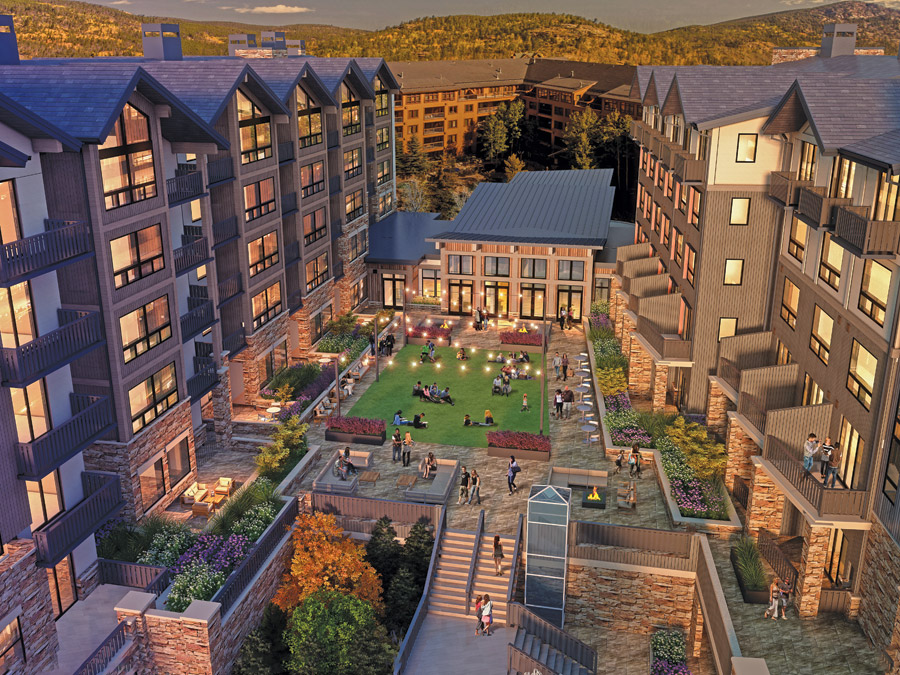
The building is three interconnected structures: an east and west tower with condominiums and a central 107-room hotel. Each unit will have a view of the mountains.
Rendering courtesy Oz Architecture
New Town, New Concept
Not only is it experiencing its first major project in decades, but Keystone is also the newest incorporated town in Colorado as of spring 2023. Rashidi says that’s a big deal. “Having a town aspect is just going to help everything,” he says. “Now [the town of Keystone] has a seat at the table.”
Rashidi says Kindred will “close up those shoulder seasons and make Keystone more of an all-the-time destination.” He says condo pre-sales “have set three or four new all-time highs per square foot” for Summit County.
“We pride ourselves on being good communi-cators, but I think what we did on this project was even beyond that.”
—Ryan Schmidt, District Manager, PCL Denver
The Kindred design is also markedly different from the condo-heavy approach of the previous concepts, Stone explains. “The hotel piece is sort of a new approach, which in my opinion is one of the reasons it really works, because it will add a lot of vibrancy to the base,” she says. “Having that be a hotel instead of condos made it a lot more public building that everybody can use: skiers and locals and guests. [The design] is more exciting than it’s been the previous three times I’ve worked on it [with other developers].”
Adds Rashidi: “We’ve got a really special project now. It’s basically becoming the base area for Keystone, with the ski school, ski rentals, ski valet and three more restaurants. It’s just bringing it all together under one roof with the River Run Gondola behind it.” All of the units will have some kind of view of the mountain, he adds.
Stone says she worked within Keystone Resort’s design guidelines that pay homage to the area’s mining history and incorporated modern elements as well. “We wanted to keep some of that gable-roofed, mining flavor, but not have it be too theme-y about mining,” she explains. “We used some raw-looking steel and natural materials that are contextual to Keystone.”
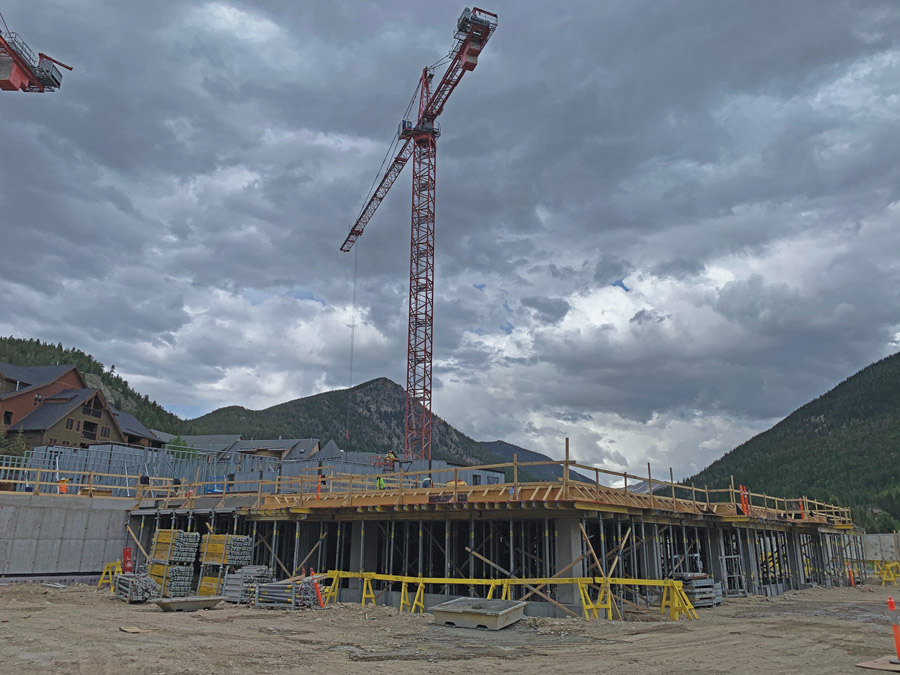
To stay on schedule and budget, the project broke ground just after Keystone Resort opened for the 2022-23 ski season.
Photo courtesy of PCL Construction Services
Winter Build
While most ski resort projects break ground in the spring, excavation for Kindred’s podium began in December 2022, after Keystone opened for the ski season.
“We always start mountain projects in April or maybe March, depending on where you’re at, because of the snow cover and the frost and everything else,” says Meunier. “On this project, that would have cost us about six months if we would have waited. We basically worked with the owner to come up with a plan to keep the work going through the winter.”
The strategy is paying off: As of June 2023, the cast-in-place podium was about halfway complete, allowing framing with a slab-on-metal floor system to begin. “A little bit of outside-of-the-box thinking kept the project overall on schedule through some pretty inclement weather this winter,” says Meunier.
Diamond Excavating of Arvada, Colo., was instrumental, he adds. “They brought up a large piece of equipment, a dozer with a ripper, that allowed us to get in and keep the ground workable where we’d basically rip through the frost and continue down at the bottom of the hole. Once we got down to the bottom of the foundations and poured concrete, at that point we started heating—instead of heating well in advance of that.”
There was also the complicating factor of working around the operations of a busy ski area. “Being good neighbors with Vail Resorts is very important to us and very important to our client as well,” Schmidt says. “That’s a major consideration with winter and summer activities and how busy that area is many months of the year.”
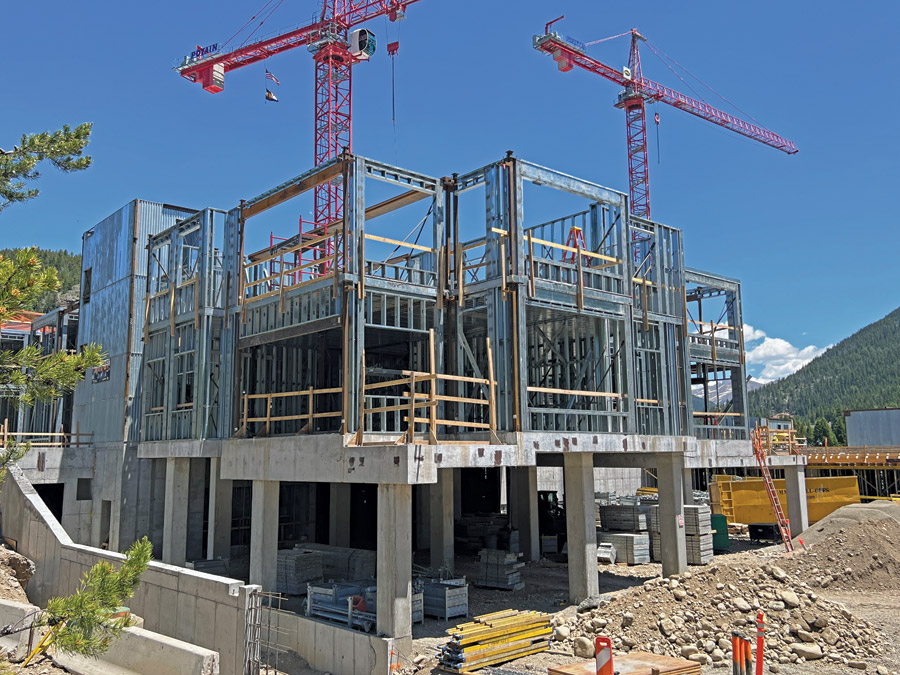
PCL is using load-bearing panels constructed in Nebraska and rebar pre-tied in Denver to minimize the amount of labor needed on site.
Photo by J. Seward for ENR
Prefabrication Assist
Rashidi says Kindred’s construction budget increased by a “significant” percentage with the inflation and supply chain woes in recent years, leading the development team to leverage offsite construction to cut costs.
“One of the challenges for this project is just getting people up the hill,” Meunier says. “One way we’re trying to work around that would be prefabrication.”
Using prefabricated load-bearing panels from Midwest Partitions of Thedford, Neb., “reduces the amount of labor we have to get up the hill,” says Meunier. The same goes for the concrete work with Aurora, Colo.-based Barton Supply, he adds. “Our rodbuster is going through and pre-tying a bunch of stuff in their Denver yard and shipping it up, which is a little bit unusual for rodbusters, but they all see the value of getting the work done down here and not fighting the elements up there.… I’m sure our MEP trades are going to be doing a lot of prefabs and sending things up ready to hang as well.”
Stone says efficiency was baked into the design. “Even before the pandemic, we really worked on trying to have different types of structure that could let the sub-trades jump from one building to another quickly and keep everything moving,” she explains.
Case in point: The structure has light-gauge steel, tube steel and red iron steel across the different masses. “It adds a little bit of complexity to coordinate the red iron that has to go up before we can set the metal wall panels,” says Meunier. “Thankfully, we have multiple buildings, so we get the west side going with the red iron and the light-gauge guy can be working on the hotel building, and they can flip back and forth.”
Many Moving Parts
“This is one of the best-functioning teams that I’ve been a part of,” says Meunier, noting the project started at a time of skyrocketing costs due to global supply chain woes. “Just the communication and the collaboration between not only us, the owner and the architect but also the subcontractors to help mitigate that wherever we can and keep this a viable project.”
Schmidt says that transparency was the key to keeping the project on target. It’s currently tracking ahead of schedule. “We really worked hard on communication with the ownership group on what so much of the construction costs were doing in that escalating state last year trying to finalize the budget. We pride ourselves on being good communicators, but I think what we did on this project was even beyond that.”


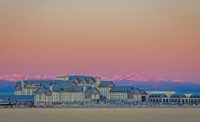
Post a comment to this article
Report Abusive Comment